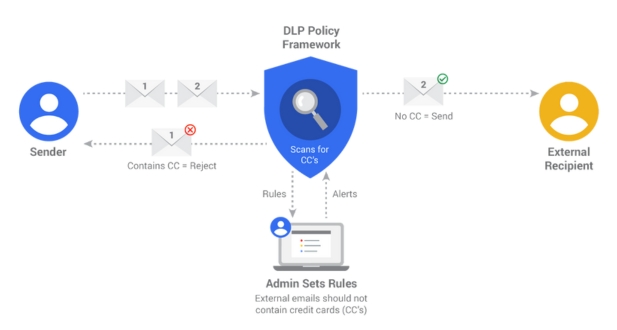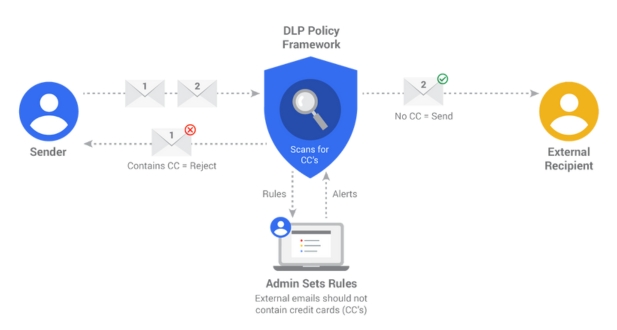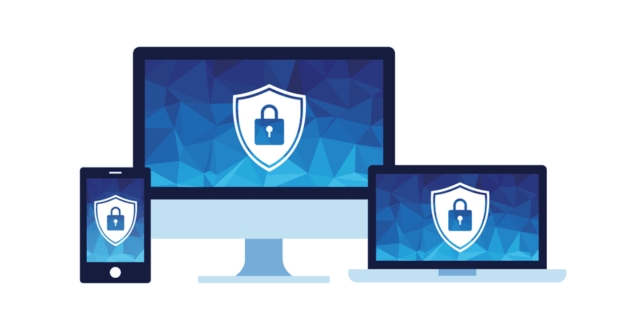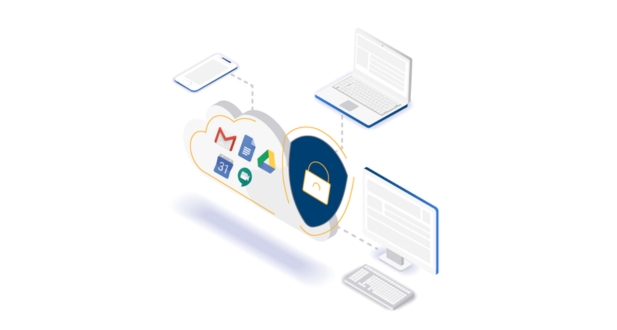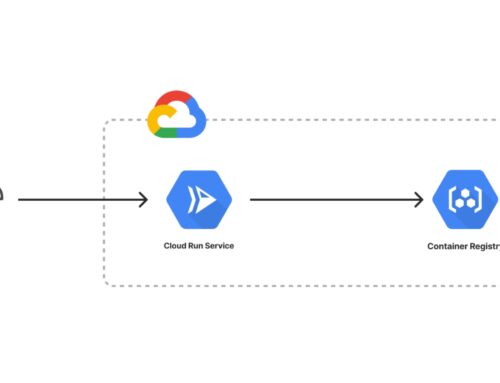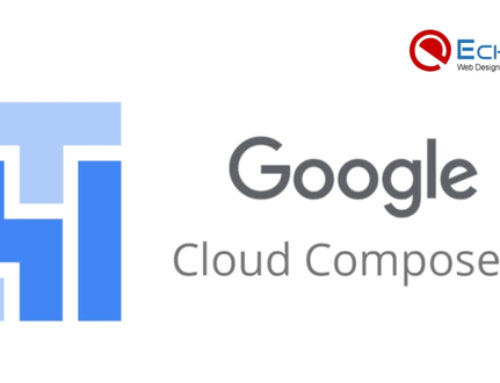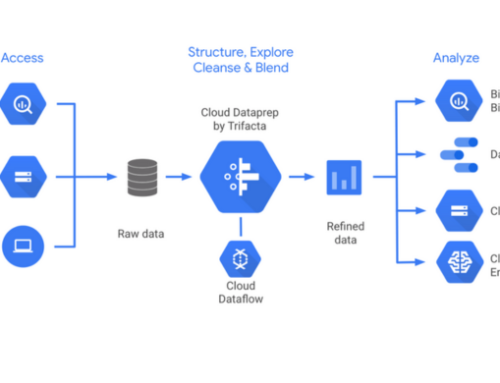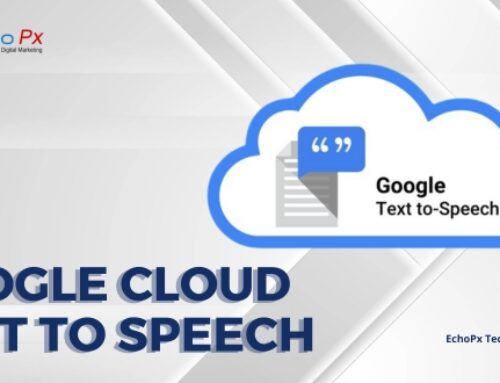Introduction
Understanding Google Workspace Data Loss Prevention (DLP)
In the contemporary digital landscape, where data serves as the lifeblood of organizational processes, protecting sensitive information has become an imperative. Google Workspace Data Loss Prevention (DLP) emerges as a critical defense mechanism, offering organizations a robust suite of tools to thwart inadvertent data leaks and safeguard their most valuable assets.
Foundations of DLP:
At the heart of Google Workspace DLP lies a commitment to identifying, monitoring, and safeguarding sensitive data. This begins with the meticulous categorization of various data types deemed confidential, such as personally identifiable information (PII), financial records, or intellectual property. A fundamental grasp of DLP involves recognizing the diverse forms that sensitive data can assume within the Google Workspace environment.
Holistic Visibility and Control:
Google Workspace DLP provides organizations with comprehensive visibility into the movement of data across different applications, empowering administrators to exert granular control over data access and sharing. This extends to emails, documents, and collaborative tools, enabling the enforcement of policies aligned with regulatory requirements and internal data protection standards.
Proactive Risk Mitigation:
Understanding Google Workspace DLP entails appreciating its role in proactive risk mitigation. Unlike traditional reactive approaches, DLP enables organizations to establish predefined policies that automatically detect and prevent potential data leaks. This proactive stance minimizes the likelihood of sensitive information falling into unauthorized hands, thereby enhancing overall data security.
Balancing Collaboration and Security:
A nuanced aspect of comprehending Google Workspace DLP is acknowledging the delicate equilibrium between collaboration and security. While fostering a collaborative environment, DLP ensures that collaboration remains secure by preventing accidental or intentional data exposure. Striking this balance is crucial for organizations seeking to harness the full potential of collaborative tools while safeguarding sensitive information.
Alignment with Compliance Standards:
Understanding Google Workspace DLP extends to recognizing its alignment with diverse compliance standards. Whether adhering to the stringent General Data Protection Regulation (GDPR), the healthcare-focused Health Insurance Portability and Accountability Act (HIPAA), or other industry-specific regulations, Google Workspace DLP empowers organizations to configure policies that meet the specific requirements of their regulatory landscape.
In essence, the introduction to Google Workspace DLP serves as a prelude to a comprehensive exploration of its indispensable role in fortifying organizations against the evolving challenges of data security and privacy in the digital age.
Importance of DLP in Modern Digital Environments
Evolving Cyber Threats and Data Vulnerabilities
In the dynamic landscape of the digital era, organizations face a myriad of evolving cyber threats that exploit vulnerabilities in their data ecosystems. As technology advances, so do the tactics employed by cybercriminals, making it imperative for businesses to adopt robust security measures. Google Workspace Data Loss Prevention (DLP) emerges as a linchpin in the defense against these ever-evolving threats.
Sophistication of Cyber Threats:
Cyber threats have grown increasingly sophisticated, encompassing a spectrum of malicious activities ranging from phishing attacks to ransomware. These threats aim to exploit vulnerabilities in an organization’s digital infrastructure, often targeting sensitive data for financial gain, espionage, or disruption of operations. The ubiquity of these threats underscores the need for a comprehensive and adaptive security approach.
- Protection Against Data Breaches:
Data breaches have become a prevalent concern for organizations across industries. The fallout from a data breach can be severe, including financial losses, reputational damage, and legal consequences. Google Workspace DLP plays a pivotal role in protecting against data breaches by implementing proactive measures to detect, prevent, and mitigate the risk of sensitive information falling into the wrong hands.
- Regulatory Compliance Requirements:
Data protection regulation is a rapidly evolving regulatory environment. Organizations are bound by rigorous obligations to safeguard the privacy and integrity of user data, as mandated by laws such as the General Data Protection Regulation (GDPR). Huge penalties may be imposed for noncompliance with these regulations.Google Workspace DLP provides organizations with the tools to align their data protection practices with regulatory standards, ensuring legal compliance in an increasingly regulated environment.
Addressing Insider Threats with DLP
While external threats pose significant risks, organizations must also contend with the challenges presented by insider threats – risks originating from within their own ranks. Insider threats can manifest as unintentional data exposure by employees or malicious activities conducted by disgruntled or compromised insiders. Google Workspace DLP offers targeted solutions to address these insider threats.
- Monitoring User Activities:
One of the key features of Google Workspace DLP is its ability to monitor user activities in real-time. By scrutinizing user interactions with sensitive data, the system can identify unusual patterns or deviations from established norms. This proactive monitoring helps organizations detect and respond to potential insider threats before they escalate.
- Preventing Accidental Data Exposure:
Data exposures are frequently attributed to human error. Employees may inadvertently share sensitive information or send emails containing confidential data to unintended recipients. Google Workspace DLP allows organizations to implement policies that automatically identify and prevent such accidental data exposure, reducing the risk associated with well-intentioned but erroneous actions.
- Detecting Malicious Insider Activities:
In cases where insiders intentionally seek to compromise data security, Google Workspace DLP provides mechanisms to detect and thwart malicious activities. By defining rules and policies that flag suspicious behavior, organizations can intervene promptly to prevent or mitigate the impact of insider threats.
In conclusion, the importance of Google Workspace DLP in modern digital environments cannot be overstated. It serves as a proactive shield against the evolving landscape of cyber threats, addressing both external and internal risks. By staying ahead of cybercriminal tactics, ensuring compliance with regulatory requirements, and effectively managing insider threats, organizations can leverage Google Workspace DLP to fortify their data defenses and maintain the integrity of their digital assets.
Implementing Google Workspace DLP
Configuring DLP Policies in Google Workspace
Implementing Google Workspace Data Loss Prevention (DLP) is a strategic undertaking that involves configuring policies to safeguard sensitive data. The configuration process is orchestrated through the Google Workspace Admin Console, providing administrators with a centralized hub for establishing and managing DLP policies.
- Policy Definition:
The initial step in configuring DLP involves defining policies tailored to the organization’s data protection requirements. Administrators can specify the types of sensitive information they want to monitor and control, such as credit card numbers, social security numbers, or proprietary company data.
- Rule Specification:
Once the types of sensitive data are identified, administrators can establish rules that govern how this information should be handled. For instance, rules may dictate that certain types of data cannot be shared outside the organization or must be encrypted during transmission.
- Contextual Analysis:
Google Workspace DLP leverages contextual analysis to understand the context in which data is being used. This contextual awareness enables more nuanced policy enforcement. For example, an email containing sensitive financial information may be allowed within the finance department but restricted when sent to external recipients.
- Real-Time Monitoring:
Configuring DLP policies also involves setting up real-time monitoring capabilities. This ensures that data is continuously tracked as it moves within the Google Workspace environment. If a potential policy violation is detected, administrators receive alerts, allowing for swift intervention to prevent data breaches.
Customizing DLP Policies for Industry-Specific Compliance
Every industry operates under a unique set of compliance standards and regulations. Google Workspace DLP recognizes this diversity by providing customization options that allow organizations to align their DLP policies with industry-specific compliance requirements.
- GDPR Compliance:
For organizations subject to the General Data Protection Regulation (GDPR), Google Workspace DLP allows the customization of policies to ensure compliance with GDPR principles. This includes provisions for data minimization, purpose limitation, and the ability to respond to data subject access requests.
- HIPAA Compliance:
In healthcare settings governed by the Health Insurance Portability and Accountability Act (HIPAA), DLP policies can be customized to meet HIPAA requirements. This may involve stringent controls on the sharing of patient information and ensuring the secure transmission of medical records.
- Tailoring Policies to Unique Needs:
Beyond GDPR and HIPAA, organizations can tailor DLP policies to meet the unique compliance needs of their industry. Whether it’s financial regulations, intellectual property protection, or specific data handling requirements, Google Workspace DLP provides the flexibility for customization.
- Regular Updates for Compliance Changes:
Configuring DLP policies for industry-specific compliance is an ongoing process. Google Workspace DLP helps organizations stay abreast of regulatory changes by providing regular updates and ensuring that policies remain in line with the latest compliance standards.
User Education on DLP Best Practices
Effective implementation of DLP extends beyond technical configurations; it requires active involvement and awareness among users. Educating users on DLP best practices is a vital component of the implementation process.
- Training Programs:
Organizations can conduct training programs to familiarize users with the importance of DLP and the specific policies in place. This training may include real-world examples, demonstrating the potential consequences of data breaches and the role users play in preventing them.
- Clear Communication of Policies:
Transparent communication of DLP policies is crucial. Users should be aware of what actions are permitted and restricted concerning sensitive data. Clear communication reduces the likelihood of unintentional policy violations and fosters a culture of data responsibility.
- User-Friendly Guidelines:
Providing user-friendly guidelines simplifies the understanding of DLP best practices. This includes practical tips on how to identify sensitive information, securely share data, and recognize potential red flags that may trigger DLP alerts.
- Encouraging Reporting of Incidents:
Users should feel empowered to report any potential DLP incidents or concerns. Establishing channels for users to report suspicious activities or seek clarification on DLP policies creates a collaborative environment where everyone plays a role in maintaining data security.
- Continuous Training and Awareness:
DLP best practices are not static; they evolve with technology and organizational changes. Implementing a continuous training and awareness program ensures that users stay informed about updates to DLP policies and remain vigilant against emerging threats.
In conclusion, the successful implementation of Google Workspace DLP involves configuring policies that align with organizational needs, customizing them to meet industry-specific compliance standards, and educating users on best practices. This comprehensive approach not only fortifies data protection but also establishes a culture of security awareness within the organization. By seamlessly integrating technical configurations with user education, organizations leveraging Google Workspace DLP can establish a robust defense against data loss and unauthorized disclosures.
Monitoring and Reporting with Google Workspace DLP
Real-Time Monitoring of Data Movement
Real-time monitoring stands as a cornerstone in the efficacy of Google Workspace Data Loss Prevention (DLP). The ability to track the movement of sensitive data as it traverses through the digital landscape empowers organizations with proactive insights into potential security threats.
- Continuous Data Tracking:
Google Workspace DLP employs sophisticated algorithms to continuously track the movement of sensitive data across various applications and services within the ecosystem. This real-time monitoring capability ensures that organizations are promptly alerted to any deviations from established data protection policies.
- Contextual Analysis:
Real-time monitoring goes beyond simple tracking by incorporating contextual analysis. This means that DLP is not solely focused on the content of the data but also considers the context in which it is being accessed or shared. This contextual awareness enhances the precision of monitoring, allowing for more nuanced decision-making in policy enforcement.
- Immediate Policy Enforcement:
In the event of a policy violation, real-time monitoring enables immediate enforcement of DLP policies. Whether it’s preventing the sharing of sensitive information outside the organization or blocking access to unauthorized users, the system can take swift action to mitigate potential risks.
Generating Comprehensive DLP Reports
Google Workspace DLP provides robust reporting capabilities that offer organizations a comprehensive view of data protection activities. These reports play a pivotal role in evaluating the effectiveness of DLP policies, identifying trends, and ensuring compliance with regulatory standards.
- Customizable Reporting Dashboards:
Administrators can access customizable reporting dashboards within the Google Workspace Admin Console. These dashboards provide a visual representation of key DLP metrics, allowing for quick assessments of data protection performance.
- Trend Analysis:
DLP reports facilitate trend analysis by highlighting patterns in data movement and policy violations over time. This historical perspective enables organizations to identify areas that may require additional focus or refinement in DLP policies.
- Compliance Auditing:
For organizations subject to regulatory compliance standards, DLP reports serve as valuable tools for compliance auditing. The ability to generate reports that demonstrate adherence to specific data protection regulations ensures that organizations can confidently navigate regulatory assessments.
Alerts and Notifications for Immediate Action
In the dynamic realm of data security, immediate action is paramount when potential threats are detected. Google Workspace DLP provides a robust system of alerts and notifications to ensure that administrators are promptly informed of any suspicious activities.
- Automated Alerting System:
DLP incorporates an automated alerting system that triggers notifications when predefined thresholds or policy violations occur. These alerts are sent in real-time, enabling administrators to respond swiftly to emerging security incidents.
- Customizable Alert Settings:
Administrators have the flexibility to customize alert settings based on the severity of incidents. Whether it’s a minor policy violation or a critical security threat, DLP allows organizations to tailor alerts to their specific needs and response protocols.
- Incident Response Facilitation:
Alerts and notifications not only serve as early warning mechanisms but also facilitate incident response. Administrators can use the information provided in alerts to investigate and take immediate action, preventing potential data breaches or unauthorized disclosures.
In conclusion, monitoring and reporting with Google Workspace DLP encompass real-time tracking, comprehensive reporting, and immediate alerts to ensure a proactive and effective defense against data loss and security threats. By leveraging these capabilities, organizations can not only maintain the integrity of their sensitive information but also adapt and refine their data protection strategies in response to evolving security challenges.
Challenges and Solutions in Google Workspace DLP (300 words)
Overcoming DLP Implementation Challenges
Implementing Google Workspace Data Loss Prevention (DLP) can present organizations with specific challenges during the initial stages. Overcoming these hurdles is essential to ensuring the seamless integration and effective operation of the DLP system.
- Integration Complexity:
One of the primary challenges is the complexity of integrating DLP within the existing organizational infrastructure. Ensuring compatibility with diverse applications and services requires meticulous planning and execution. Solutions involve leveraging comprehensive integration guides provided by Google Workspace and seeking assistance from experienced IT professionals during the implementation phase.
- Data Classification Accuracy:
Accurate data classification is crucial for the effectiveness of DLP policies. Challenges may arise in accurately identifying and categorizing sensitive information. Continuous refinement of data classification models, periodic reviews, and leveraging machine learning capabilities for improved accuracy are key solutions.
User Adoption and Resistance to DLP
User adoption plays a pivotal role in the success of any security initiative, and DLP is no exception. However, organizations often encounter resistance from users who may perceive DLP as a hindrance to their workflow.
- Lack of Awareness:
Users may resist DLP due to a lack of awareness regarding its purpose and benefits. Addressing this challenge involves implementing robust user education programs that highlight the importance of DLP in protecting sensitive data and the overall security of the organization.
- Balancing User Convenience:
Resistance can stem from perceived inconveniences caused by DLP policies. Striking a balance between robust security measures and user convenience is crucial. Solutions include refining policies to minimize disruptions, providing user-friendly guidelines, and actively incorporating user feedback to optimize DLP configurations.
Balancing Security and User Productivity
Balancing the need for stringent security measures with user productivity is an ongoing challenge for organizations implementing DLP. Striking the right equilibrium ensures that data remains secure without impeding the efficiency of daily operations.
- Fine-Tuning Policy Stringency:
Organizations must fine-tune DLP policies to align with their unique risk tolerance and operational requirements. Adjusting policy stringency based on the sensitivity of data and user roles helps strike a balance between security and productivity.
- Continuous Communication:
Maintaining open channels of communication is crucial in addressing concerns related to the impact of DLP on user productivity. Regular updates, training sessions, and transparent communication about the rationale behind DLP policies foster understanding and cooperation among users.
In conclusion, addressing challenges in Google Workspace DLP implementation requires a proactive approach. Overcoming integration complexities, fostering user adoption through education, and striking a balance between security and productivity are key elements in ensuring the success of DLP initiatives within organizations.
Future Trends and Considerations in Google Workspace DLP
Integration of AI for Advanced Threat Detection
The future of Google Workspace Data Loss Prevention (DLP) is poised for significant advancements with the integration of Artificial Intelligence (AI) for advanced threat detection. AI technologies, such as machine learning algorithms, will play a pivotal role in enhancing DLP capabilities by providing more nuanced insights into evolving cyber threats.
- Behavioral Analysis:
AI-driven behavioral analysis will enable DLP systems to understand user patterns and identify anomalies indicative of potential security threats. This proactive approach to threat detection enhances the ability to preemptively address emerging risks.
- Predictive Analysis:
AI will enable predictive analysis, allowing DLP systems to forecast potential vulnerabilities and take preventive measures. This shift from reactive to proactive threat management aligns with the evolving landscape of cybersecurity, where anticipating and mitigating risks in real-time is paramount.
Cloud-Native DLP Innovations
As organizations increasingly embrace cloud-native environments, the future of Google Workspace DLP will witness innovations tailored for seamless integration and optimal performance within cloud ecosystems.
- Scalability in the Cloud:
Cloud-native DLP innovations will focus on scalability, ensuring that DLP solutions can effortlessly adapt to the dynamic and elastic nature of cloud infrastructures. Scalability is an essential attribute for organizations undergoing expansion and growth.
- Improved Collaboration Security:
With the collaborative nature of platforms like Google Workspace, future DLP innovations will place a heightened emphasis on securing collaborative workflows. This involves developing more granular controls for shared documents, real-time monitoring of collaborative spaces, and enhanced encryption methods for collaborative data.
Continuous Improvement Strategies in DLP
The future of Google Workspace DLP will be characterized by a commitment to continuous improvement strategies. These strategies will ensure that DLP systems evolve to address emerging threats, adapt to changing organizational needs, and remain at the forefront of data protection.
- Dynamic Policy Refinement:
Continuous improvement involves dynamic policy refinement based on evolving security landscapes. Organizations will regularly reassess and update DLP policies to align with new data types, compliance standards, and emerging threat vectors.
- User-Centric Adaptations:
Future DLP systems will employ user-centric adaptations, considering user feedback and behavior to refine policies. This approach not only enhances the user experience but also ensures that DLP policies remain effective in real-world scenarios.
In conclusion, the future trends and considerations in Google Workspace DLP revolve around harnessing the power of AI for advanced threat detection, embracing cloud-native innovations, and committing to continuous improvement strategies. These developments underscore a proactive and adaptive approach to data protection in the ever-evolving landscape of cybersecurity.
